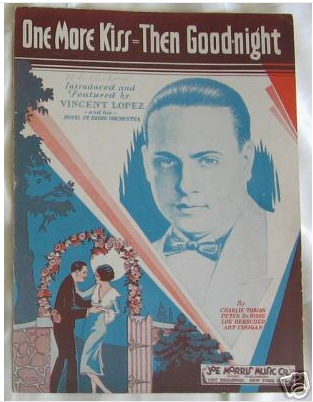Fun Fun Fun Turning Back The Clock 70 Years (Page One)
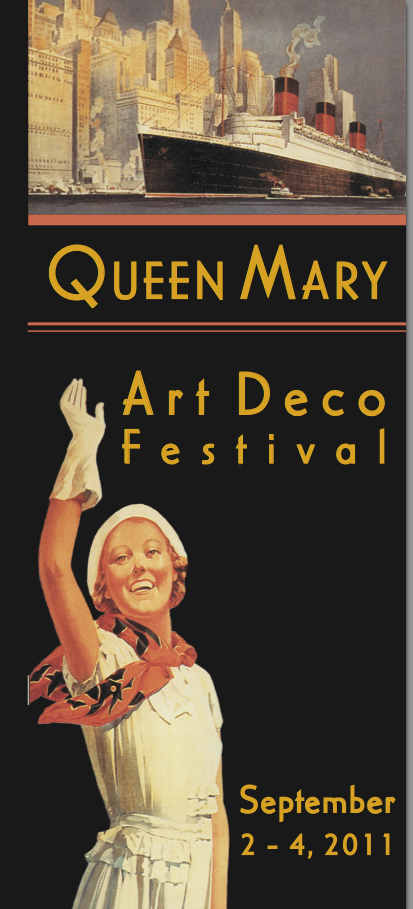
We have gone since the ball began seven years ago and will continue as long as the legs hold out.
RMS Queen Mary is a retired ocean liner that sailed primarily in the North Atlantic Ocean from 1936 to 1967 for the Cunard Line (known as Cunard-White Star when the vessel entered service). Built by John Brown & Company in Clydebank, Scotland, Queen Mary along with her running mate, the RMS Queen Elizabeth, were built as part of Cunard's planned two-ship weekly express service between Southampton, Cherbourg, and New York City.
The two ships were a British response to the superliners built by German and French companies in the late 1920s and early 1930s. Queen Mary was the flagship of the Cunard Line from May 1936 until October 1946 when she was replaced by Queen Elizabeth. The vessel also held the Blue Riband from 1936 to 1937 and then from 1938 to 1952 when she was beaten by the new SS United States.
Queen Mary sailed on her maiden voyage on 27 May 1936 and captured the Blue Riband in August of that year; she lost the title to the SS Normandie in 1937 and recaptured it in 1938. With the outbreak of World War II, she was converted into a troopship and ferried Allied soldiers for the duration of the war.
Following the war, Queen Mary was refitted for passenger service and along with Queen Elizabeth commenced the two-ship transatlantic passenger service that the two ships were initially built for. The two ships dominated the transatlantic passenger transportation market until the dawn of the jet age in the late 1950s. By the mid-1960s the ship was aging and though still among the most popular transatlantic liners, was operating at a loss.
After several years of decreased profits for Cunard Line, Queen Mary was officially retired from service in 1967. The ship left Southampton in 1968 for the last time and was sailed to the port of Long Beach, California, United States, where it remains permanently moored. Much of the machinery including the propellers and boilers were removed, and the ship now serves as a tourist attraction featuring restaurants, a museum, and hotel. The ship is listed on the National Register of Historic Places.
Who is going this year?
Paul & Sue
Donna and Bob
Ed & Kathy
It's Going To Be Fun!

This Evenings Program
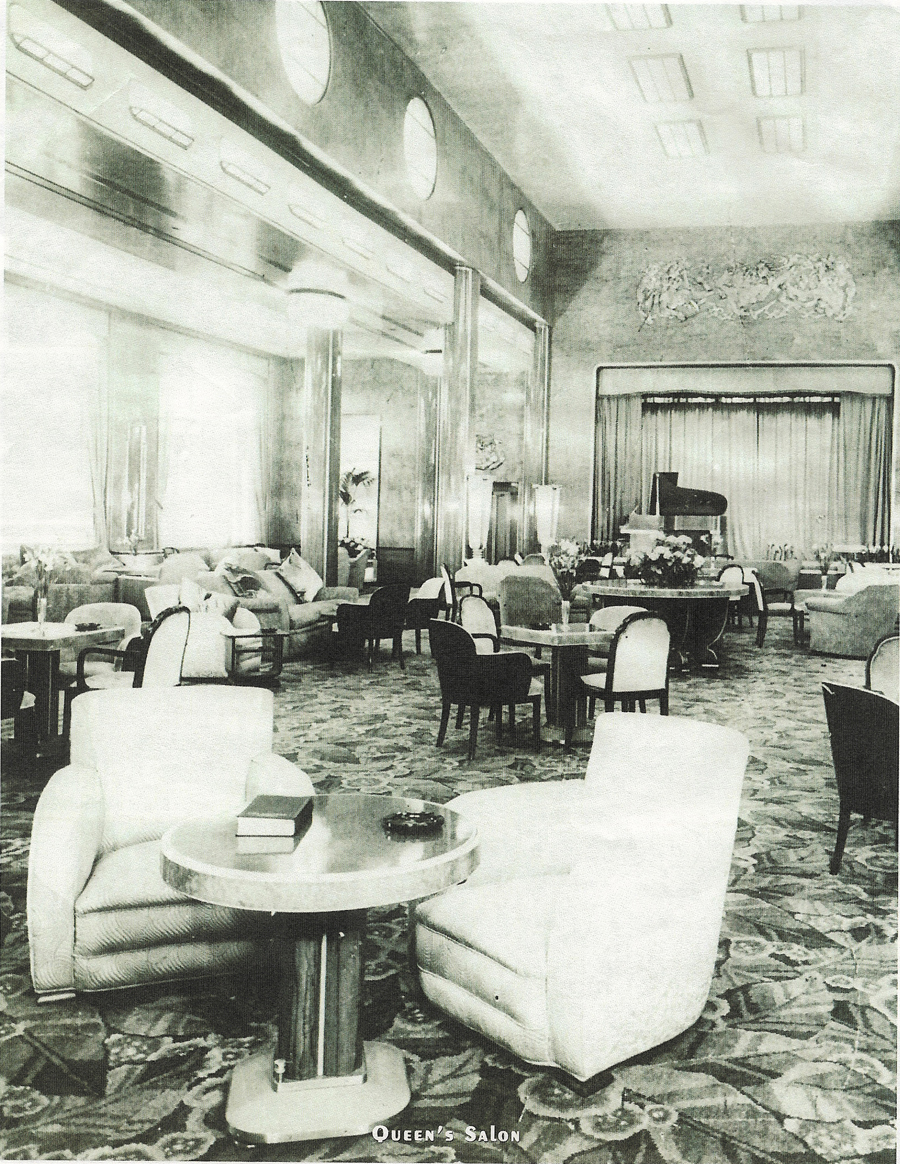
The Grand Salon circa 1938
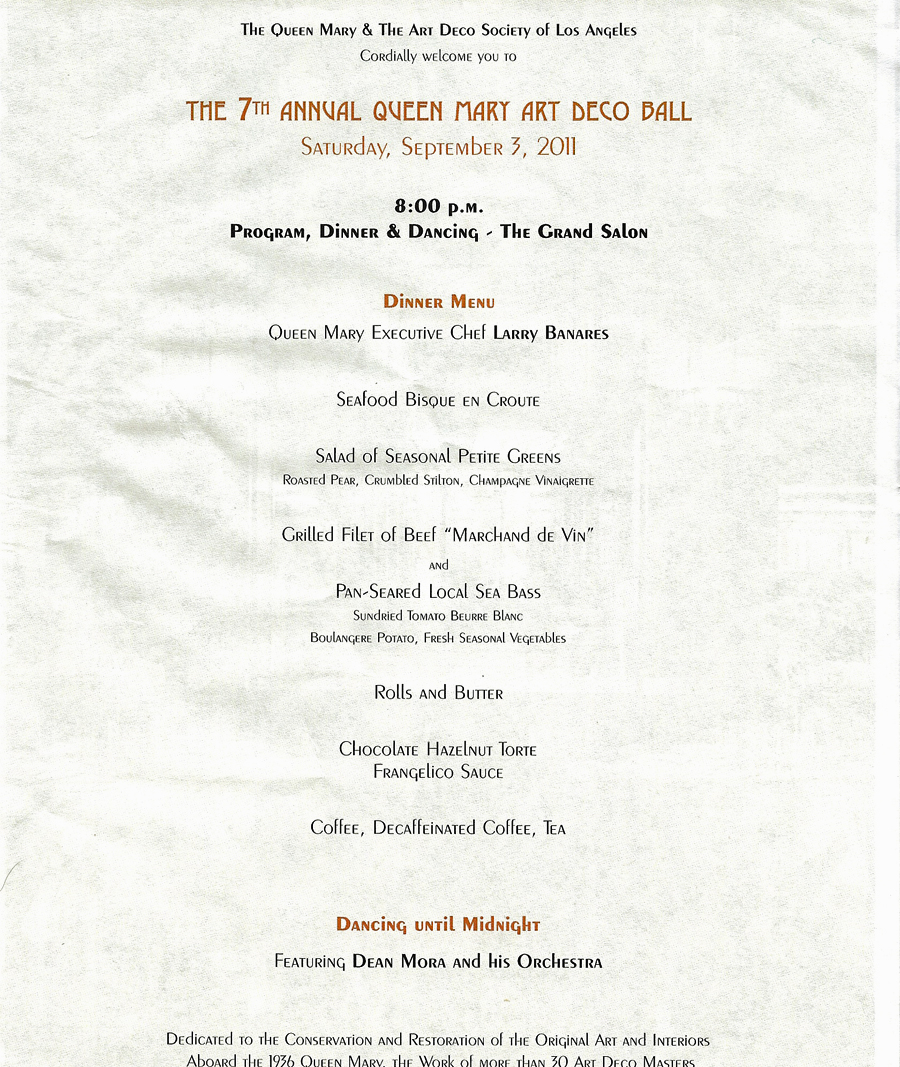
Yummy
and good exercise also!!!
Let The Fun Begin In The OB (Nope... Not OC)
Did You Know? - The Observation Bar and Lounge (OB) was a first class facility at the forward part of promenade deck, a favorite of many passengers from bankers to traveling celebrities. Those who appreciated the atmosphere included the head of the Soviet delegation to the United Nations, Anastas Mikoyan. (If Mr.Mikoyan pondered the political message inherent in the subject of painting - all classes of Britons joined arm in arm dancing and riotously celebrating the 25th jubilee of the reign of King George V and Queen Mary, he might have been less sanguine drinking there.) The OB was generally described as a great place for conversation that had a spectacular view of the sea, but it was not used as a place of live entertainment.
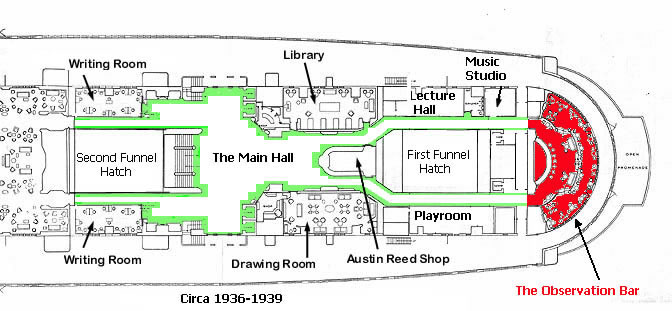
The OB is right up front with a grand view of the ocean

Click the picture for the full-sized 1600x1200 pixel image
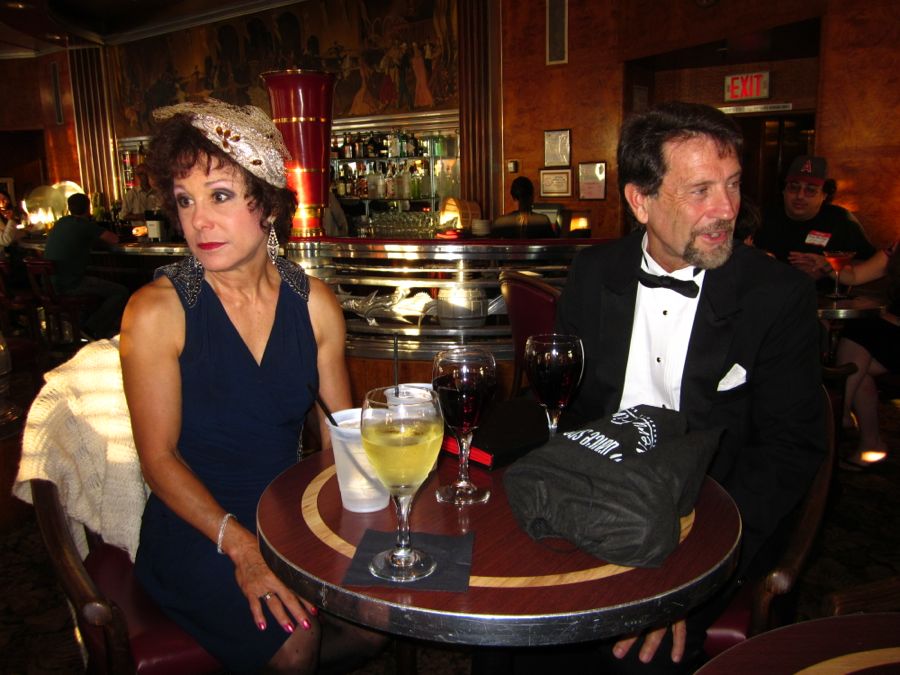
Donna and B ob... Always in fashion

Turning the clock back 70 years....
Did You Know? - The most characteristic North American fashion trend from the 1930s to the end of World War II was attention at the shoulder, with butterfly sleeves and banjo sleeves, and exaggerated shoulder pads for both men and women by the 1940s. The period also saw the first widespread use of man-made fibers, especially rayon for dresses and viscose for linings and lingerie, and synthetic nylon stockings. The zipper became widely used.
These essentially U.S. developments were echoed, in varying degrees, in Britain and Europe. Suntans (called at the time "sunburns") became fashionable in the early 1930s, along with travel to the resorts along the Mediterranean, in the Bahamas, and on the east coast of Florida where one could acquire a tan, leading to new categories of clothes: white dinner jackets for men and beach pajamas, halter tops, and bare midriffs for women
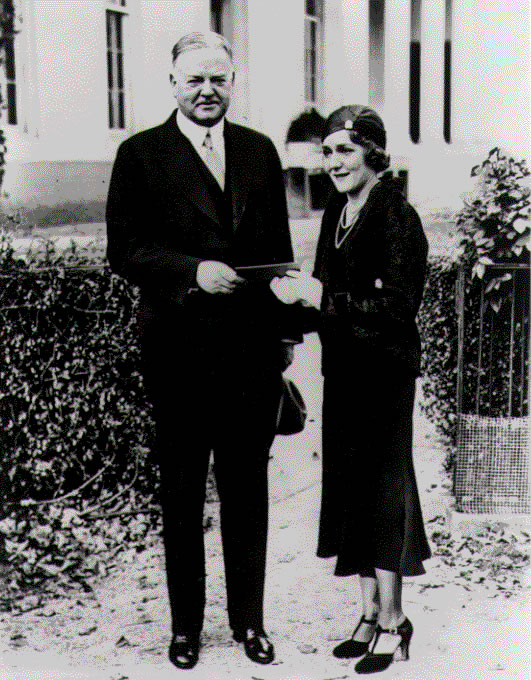
U.S. President Herbert Hoover and film star Mary Pickford. 1931-25A: Mary Pickford gives President Hoover a ticket for a film industry benefit for the unemployed, November 12, 1931
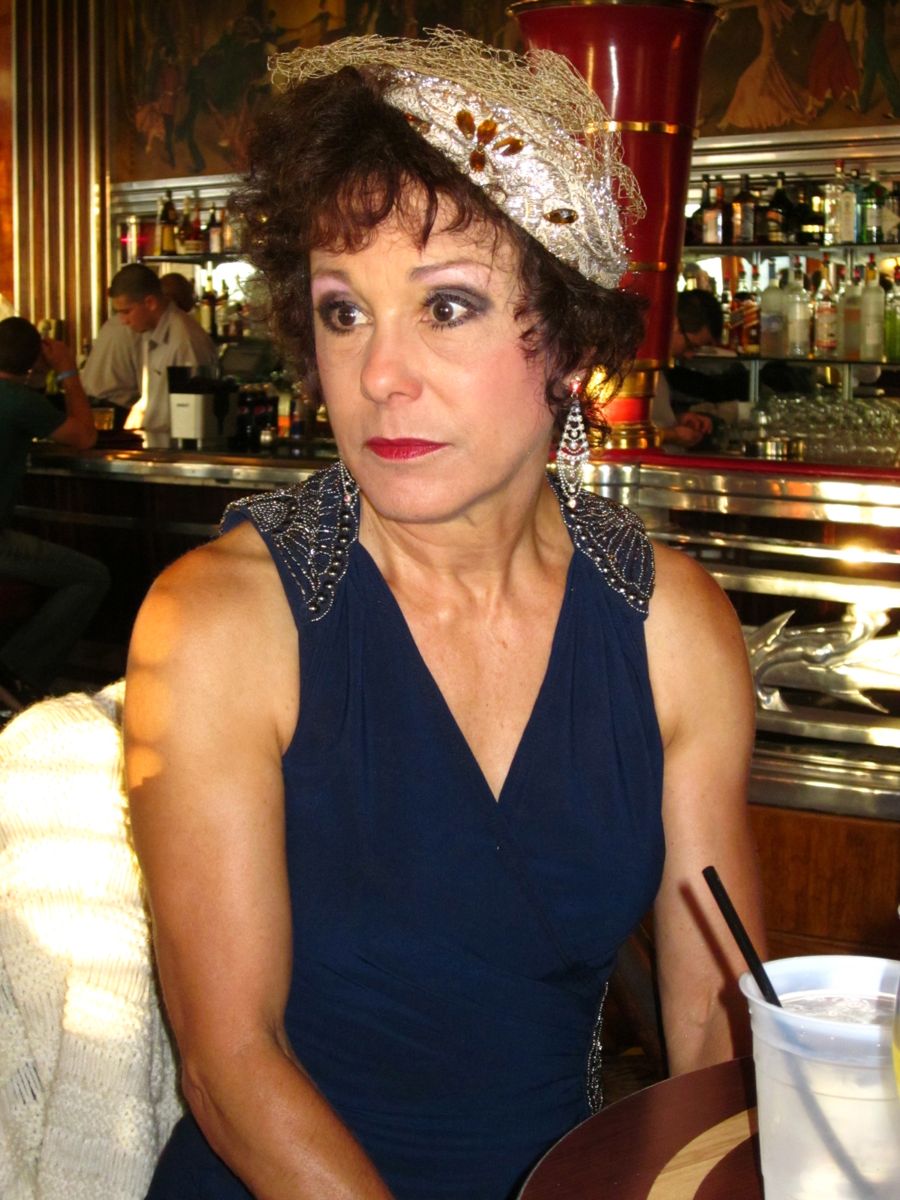
The hat was fantastic

The French set the styles in the 1930's
Did You Know? - Vintage originally related to the year a wine or oil was bottled. Then the word passed into general usage to mean the year a particular item was made. First it was used to describe vintage cars, meaning cars that were at least 50 years old. Next dealers of second hand clothing took this a stage further and used it describe older clothes. Now many sellers and buyers use vintage as a term to describe almost all previously owned second hand clothing of 25 years or more years age.

Bob explains his morning and why he is called "The Freeway Flyer"

Playing with the focus...
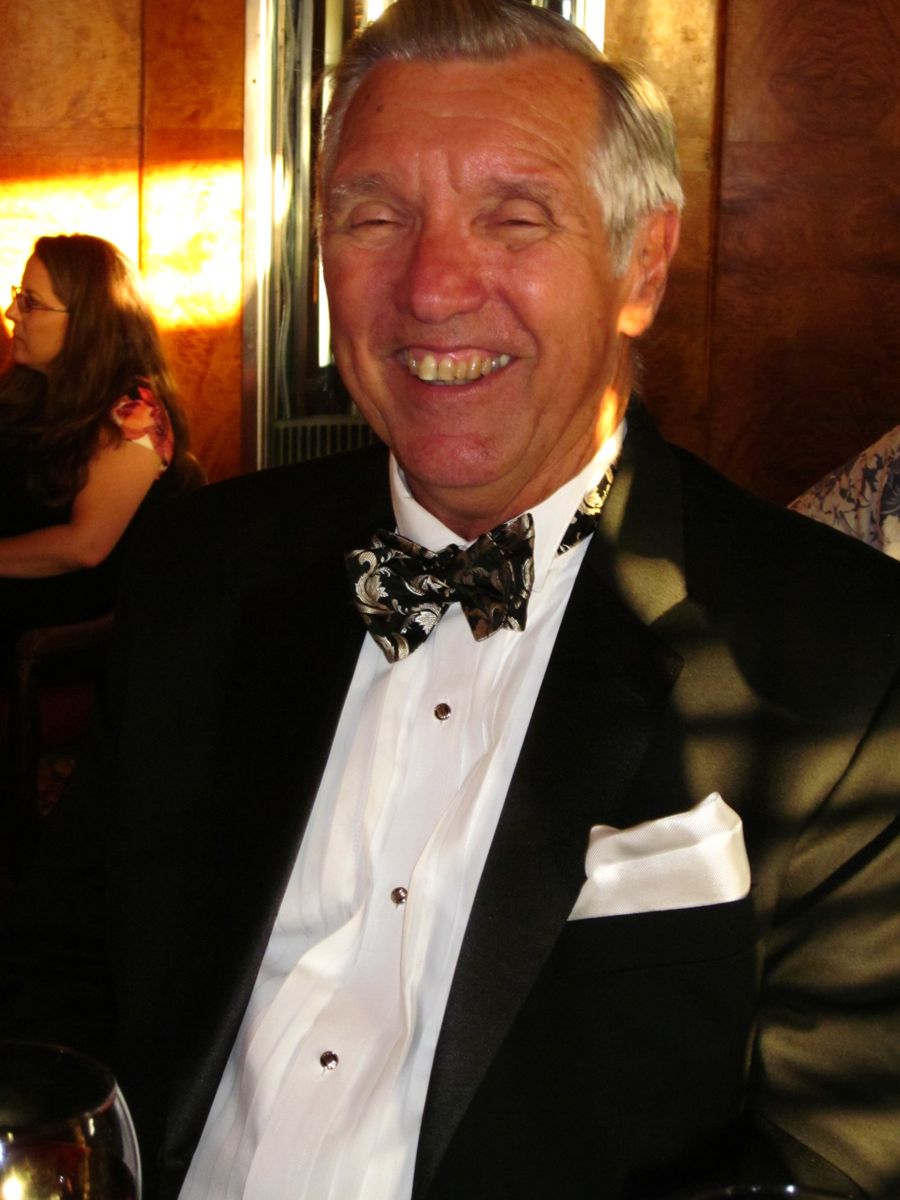
Not to be outdone.... Ed flashes his famous smile
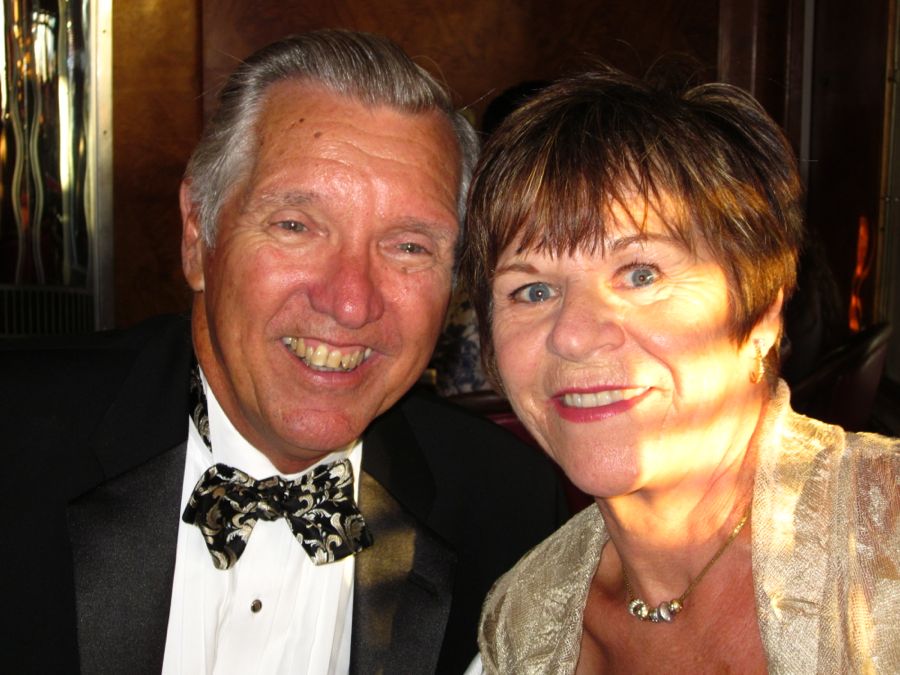
Ed & Kathy
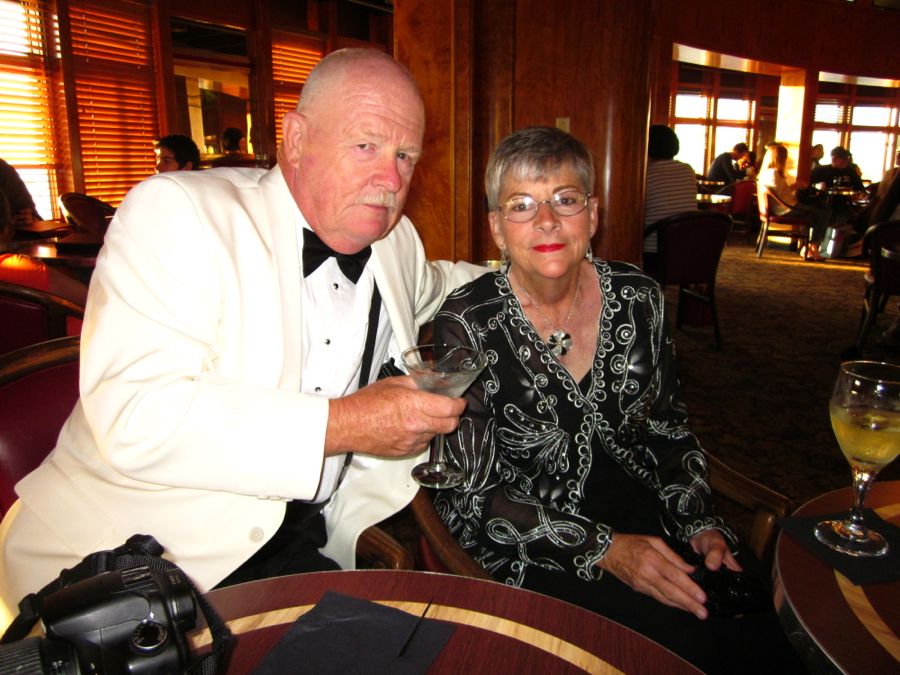
It's Martini time
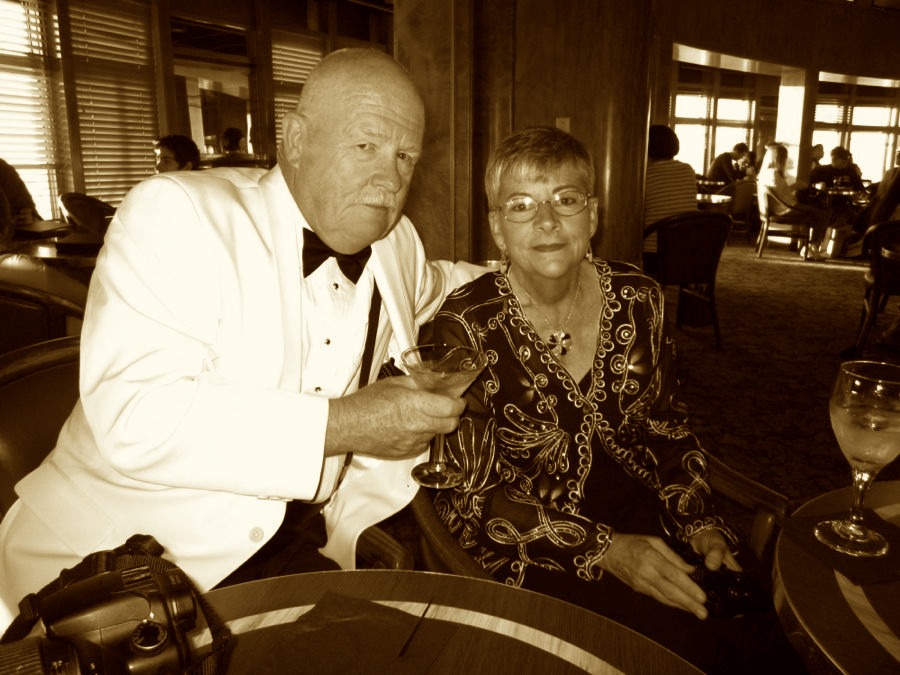
We look pretty good in sepia...
Did You Know? - Sepia is a dark brown-grey color, named after the rich brown pigment derived from the ink sac of the common cuttlefish Sepia.
The word sepia is the Latinized form of the Greek σηπία, sēpía, cuttlefish.
Sepia tones are used in photography; the hue resembles the effect of aging in old photographs and photographs chemically treated for archival purposes, an effect sometimes created on purpose.
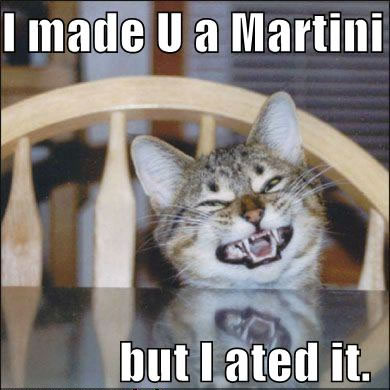
We Wait In The Anteroom For The Doors To Open

Ed clutches onto his dancing fuel
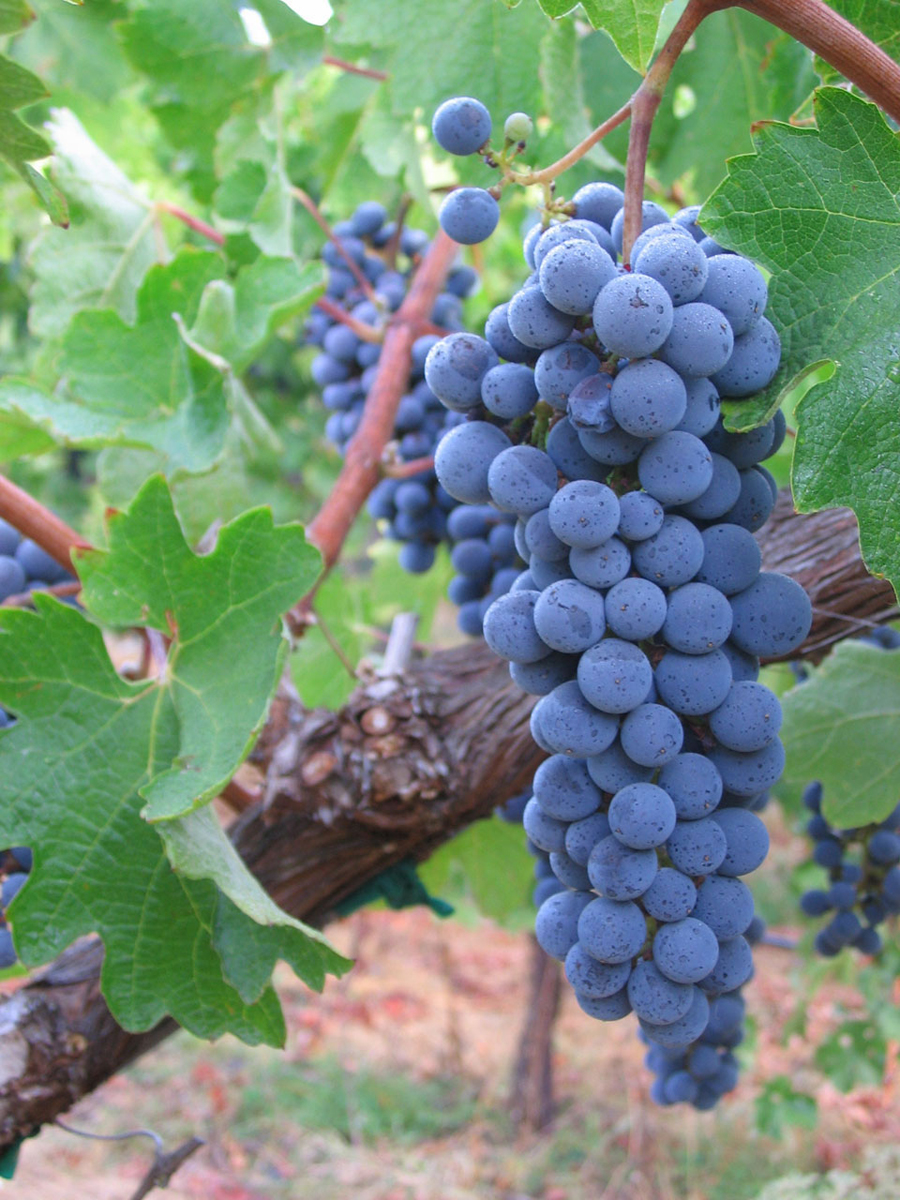
Now we know why Ed's dancing shoes are purple... Who wodda thunk it??
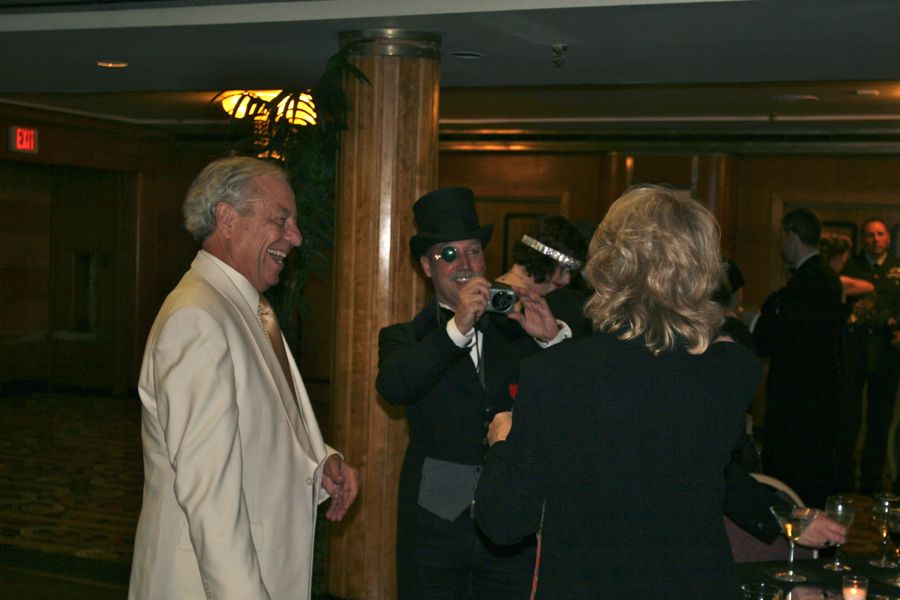
Cameras are flashing all over
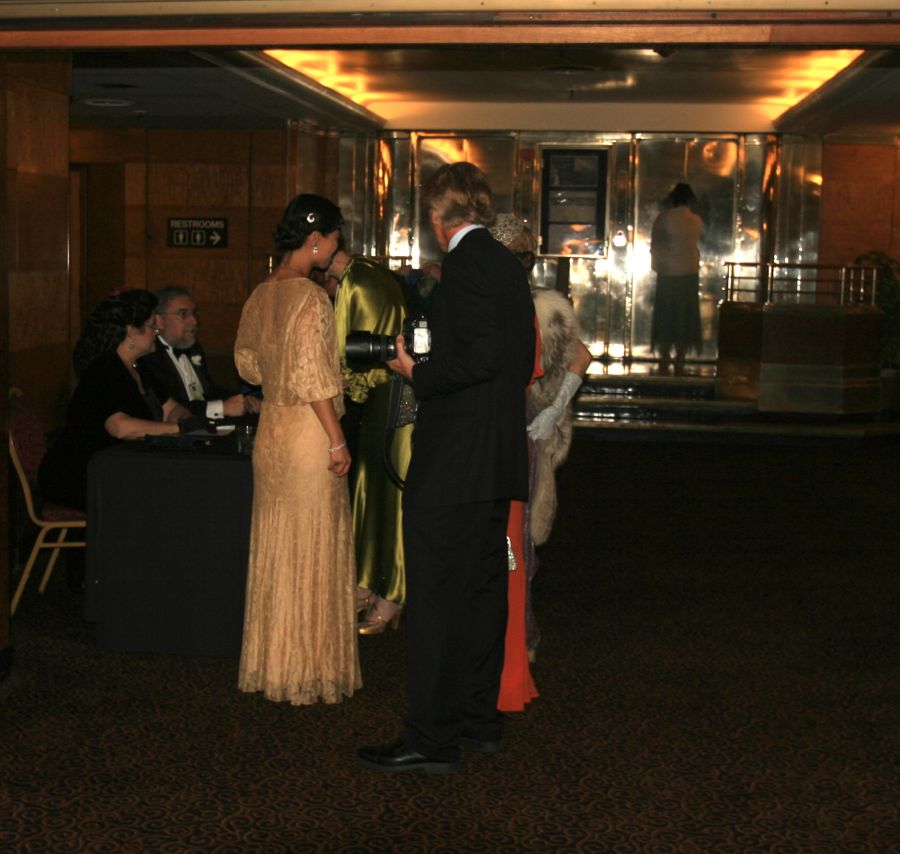
Dressed to the 9's
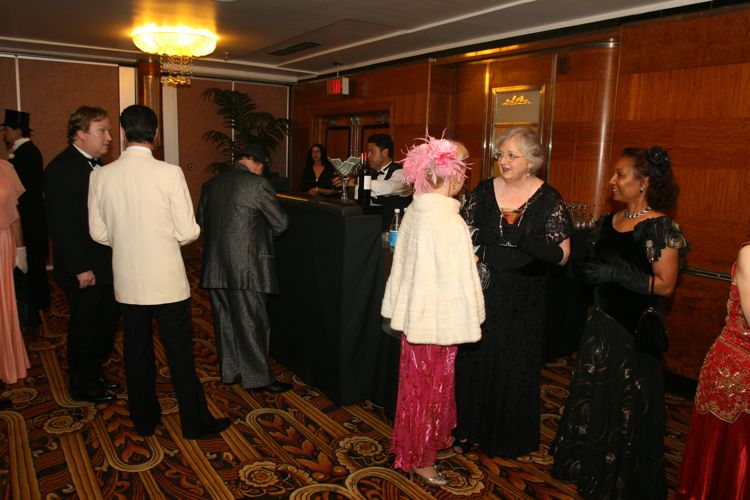
All dressed up
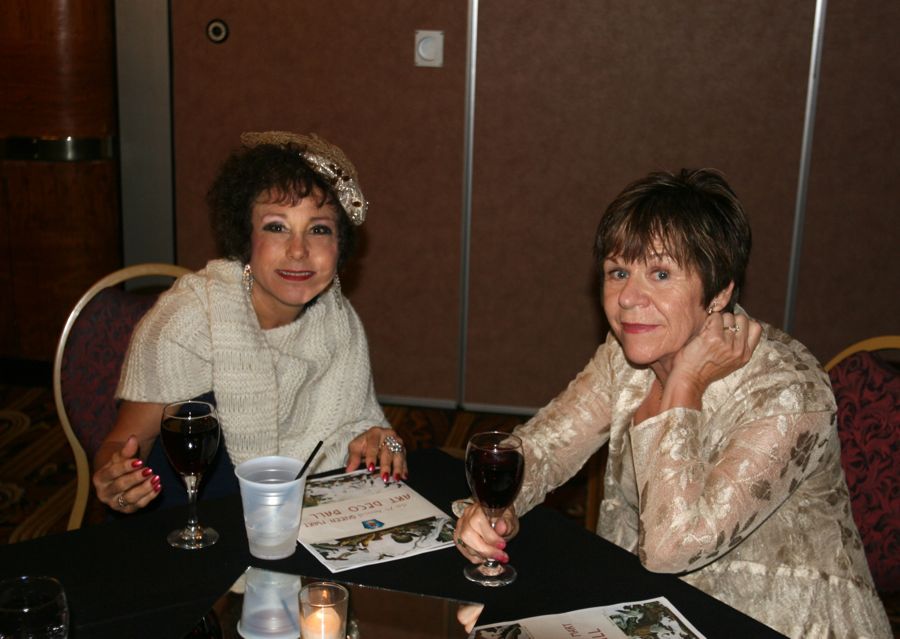
Swapping secrets

Ed, Bob and Sue hold our place in line
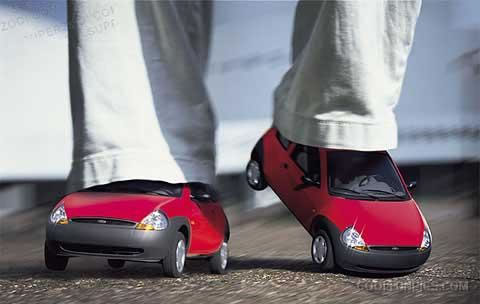
Ed's dancing shoes allow him to scoot across the floor...

There is a lot of giggling going on over there






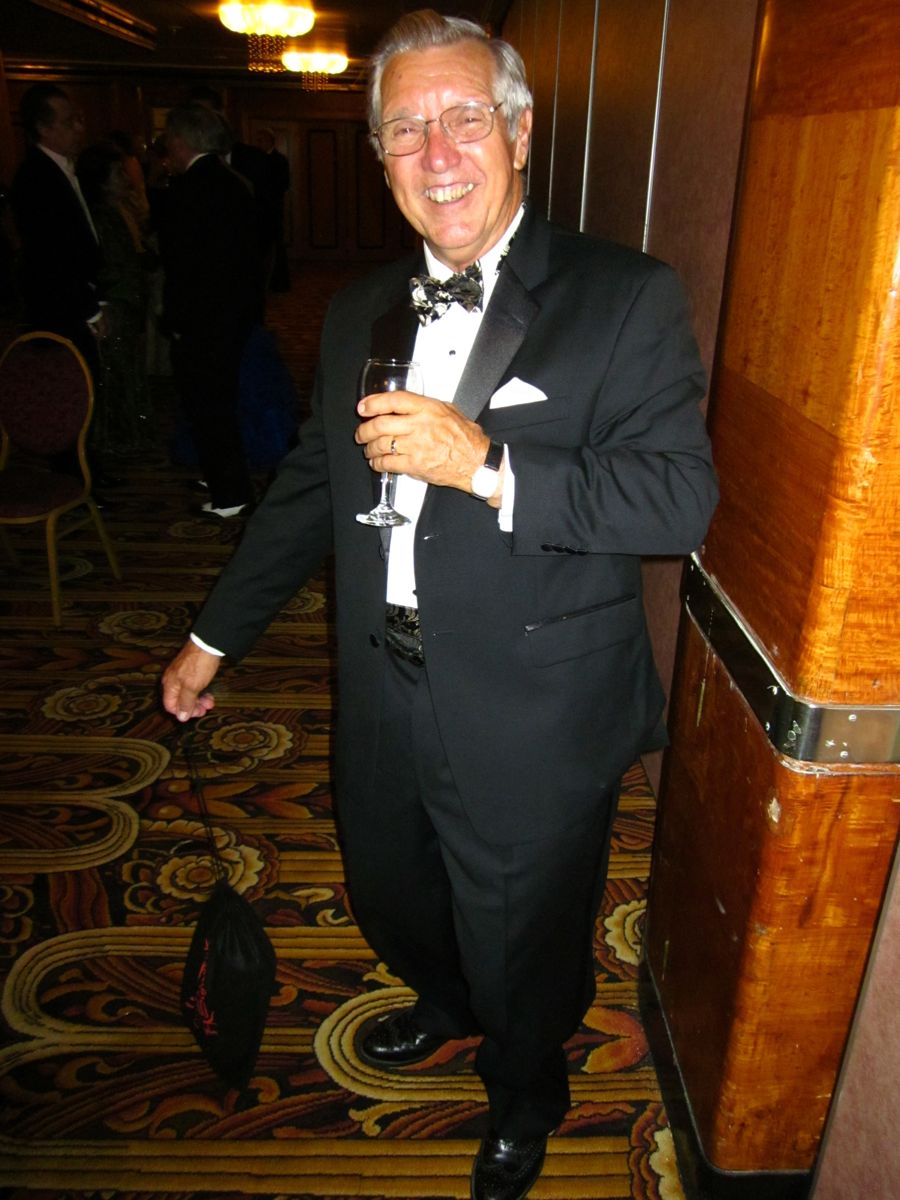
Ed explains about his hush puppies
Did You Know? - Hushpuppies (Cornbread Balls) are a savory, starch-based food made from cornmeal batter that is deep fried or baked in small ball or sphere shapes, or occasionally oblong or ring shapes. Hushpuppies are frequently served as a side dish, usually at seafood restaurants in the United States.
Native Americans were using ground corn for cooking long before European explorers arrived in the New World. Southern Native American culture (Cherokee, Chickasaw, Choctaw, Creek) is the "cornerstone" of Southern cuisine. From their culture came one of the main staples of the Southern diet: corn (maize), either ground into meal or limed with an alkaline salt to make hominy, also called masa, in a Native American technology known as nixtamalization.
Corn was used to make all kinds of dishes from the familiar cornbread and grits to liquors such as whiskey and moonshine, which were important trade items. Cornbread was popular during the American Civil War because it was very cheap and could be made in many different sizes and forms. It could be fashioned into high-rising, fluffy loaves or simply fried for a fast meal.
Bob's Plan Worked.... We Got Great Seats
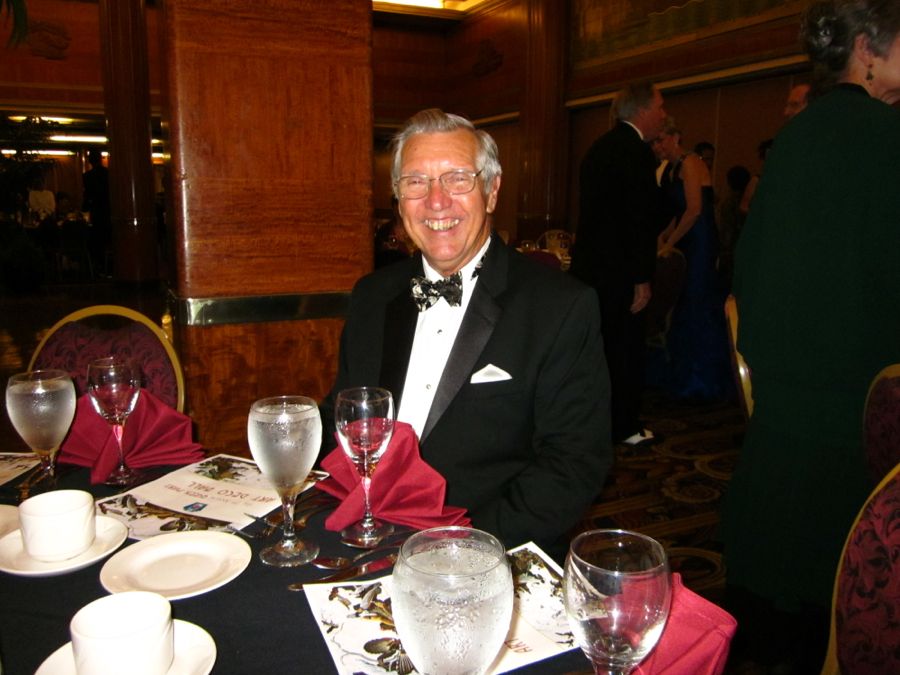
Ed "plops down" and saves our seats
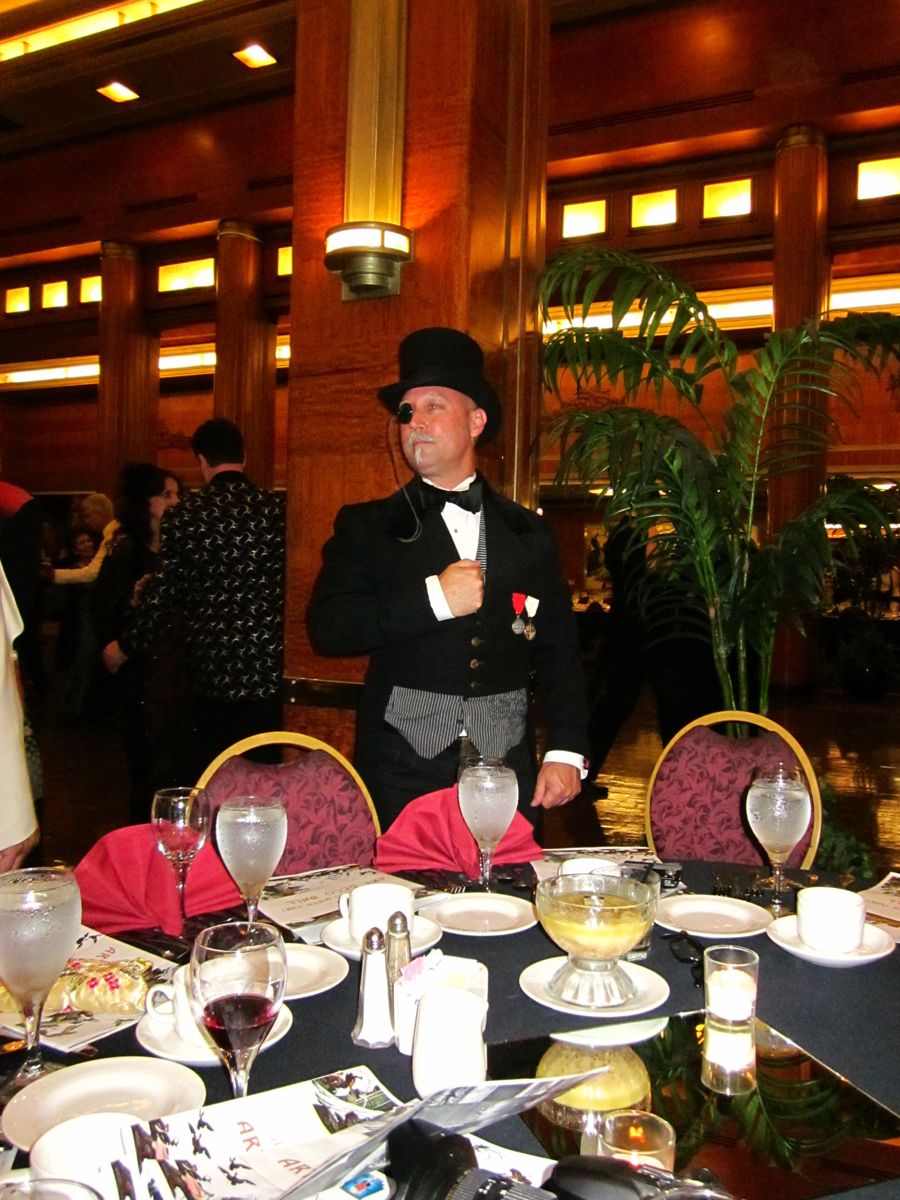
Our table partner was quite delightful
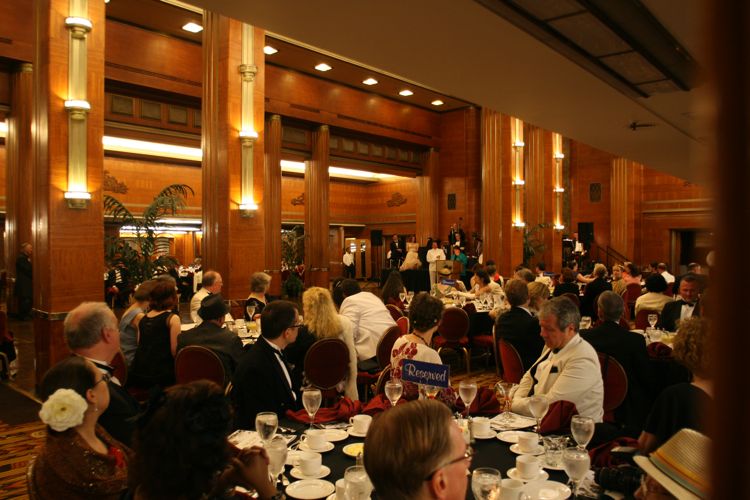
A beautiful evening

Dean Mora's band and the singers did great this evening
Did You Know? - Did You Know? - DEAN MORA AND HIS ORCHESTRA is the newest member of the Mora's Modern Music family, having been formed in 2006 to play the classic repertoire of the Big Bands of the 1930s and 1940s. This is the largest band ever assembled by Dean Mora: 20 musicians in all!: and has received great acclaim by dancers and big band enthusiasts alike.
![]()
The Orchestra has performed several times at Maxwell DeMille's Cicada Club (a 1940s-style supper club located at the historic Oviatt Building in downtown Los Angeles), as well as having performed at the newly-restored Levitt Pavilion in MacArthur Park. 2008 promises to be a year of many more performances by this group, easily the most "authentic" big band in Southern California.
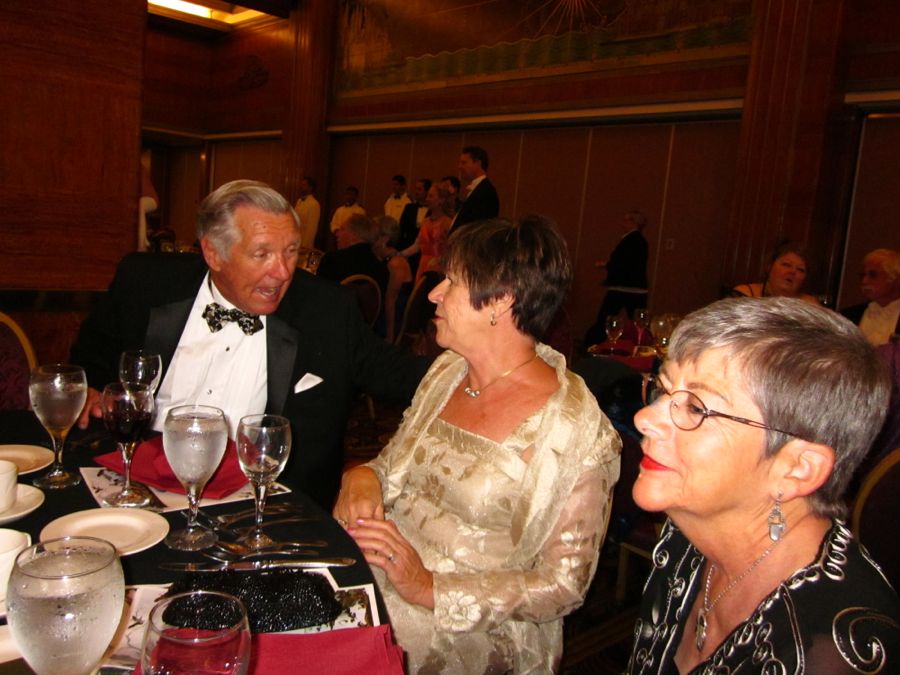
Ed spots the "Nylons Girl"
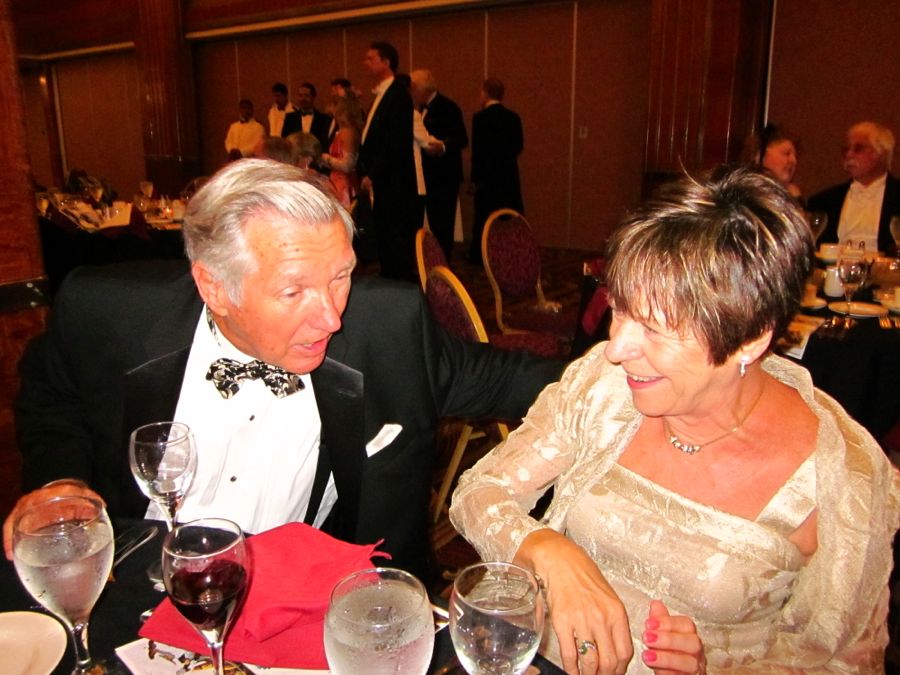
Now he is really 'splaining what he saw....

The great map was static this evening

"OK Kathy.... Did you see her this time?"
Time For Pronouncements
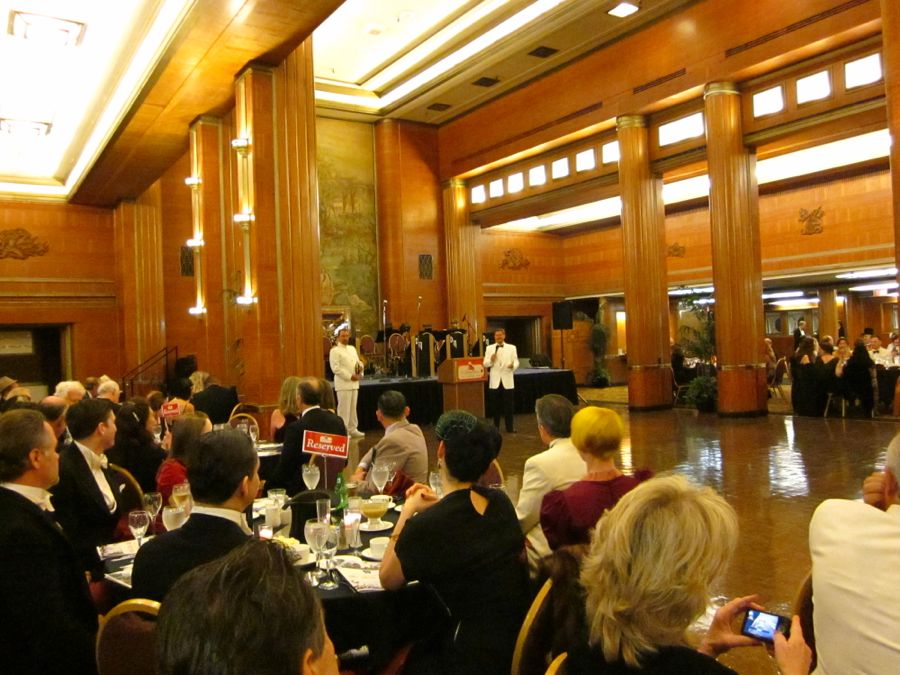
John Thomas works very hard to make this an excellent event and he did it again this year


A visit to the "head" required planning ahead
Did You Know? - The head (or heads) is a ship's toilet. The name derives from sailing ships in which the toilet area for the regular sailors was placed at the head or bow of the ship.
In sailing ships the toilet was placed in the bow for two reasons. First, since most vessels of the era could not sail directly into the wind, the winds came mostly across the rear of the ship placing the head essentially downwind. Secondly, if placed somewhat above the water line, vents or slots cut near the floor level would allow normal wave action to wash out the facility. Only the captain had his private toilet near his quarters, below the poop deck .
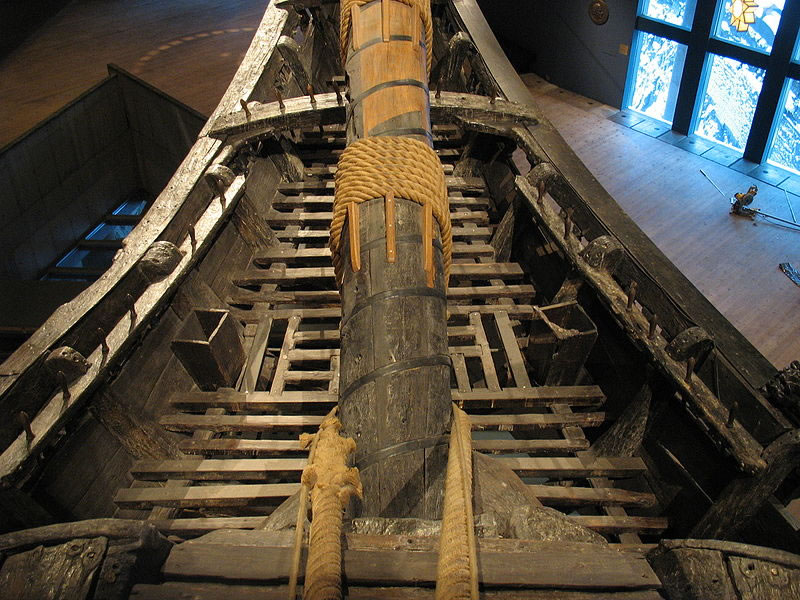
The "head" of years gone by
... The opposite end of the ship from the Poop Deck
Did You Know? - In naval architecture, a poop deck is a deck that forms the roof of a cabin built in the rear, or "aft", part of the superstructure of a ship. The name originates from the French word for stern, la poupe, from Latin puppis. Thus the poop deck is technically a stern deck, which in sailing ships was usually elevated as the roof of the stern or "after" cabin, also known as the "poop cabin". In sailing ships, with the helmsman at the stern, an elevated position was ideal for both navigation and observation of the crew and sails.
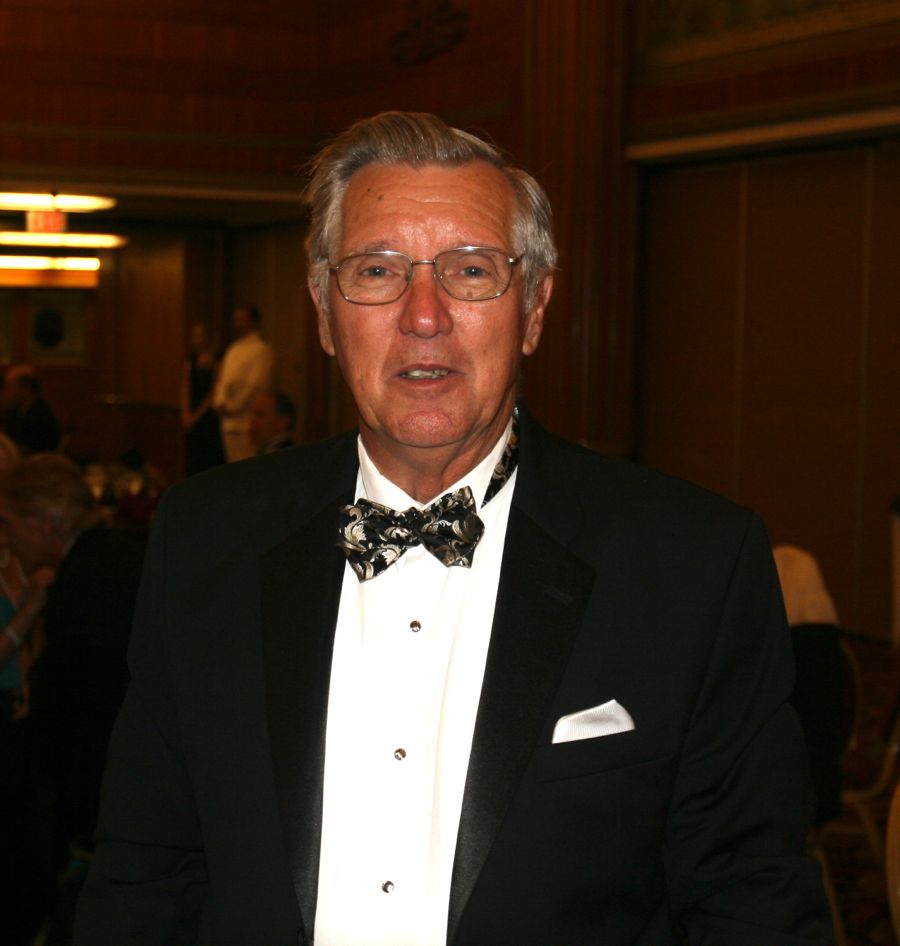
"I think I will wait until I get home!"
Throw Some Water On The Floor... They Are Hitting The Floor Again

Zooooooming around the floor

Look out ahead... Here we come
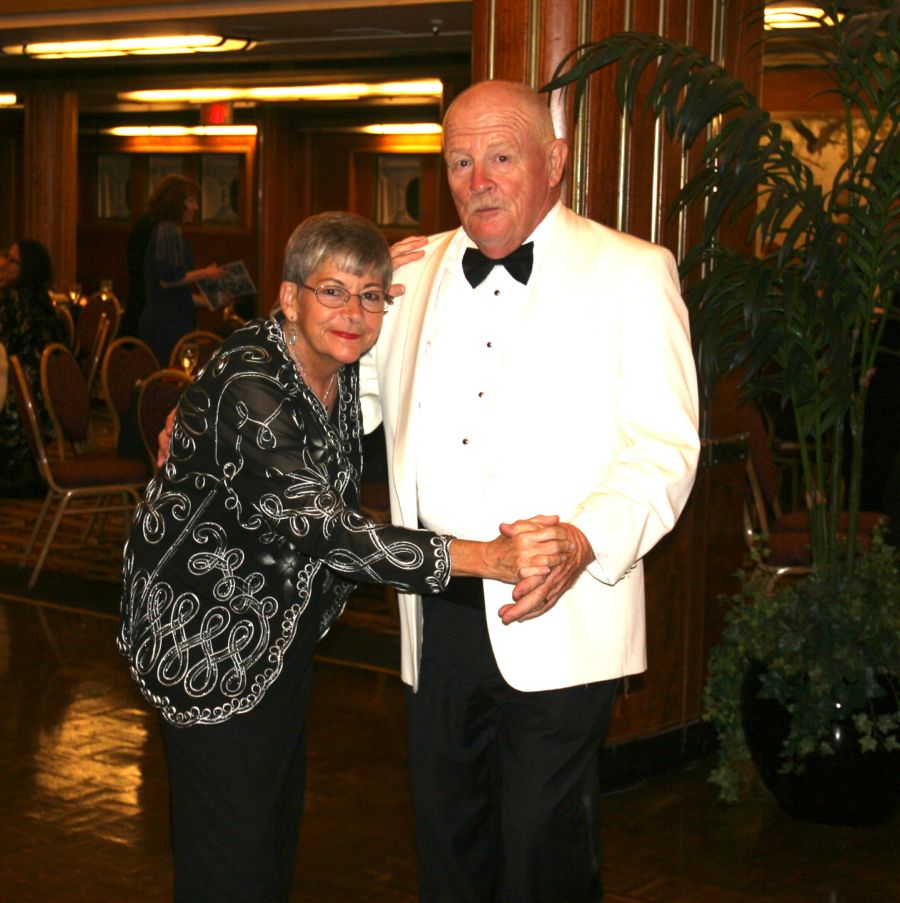
It's black and white.....
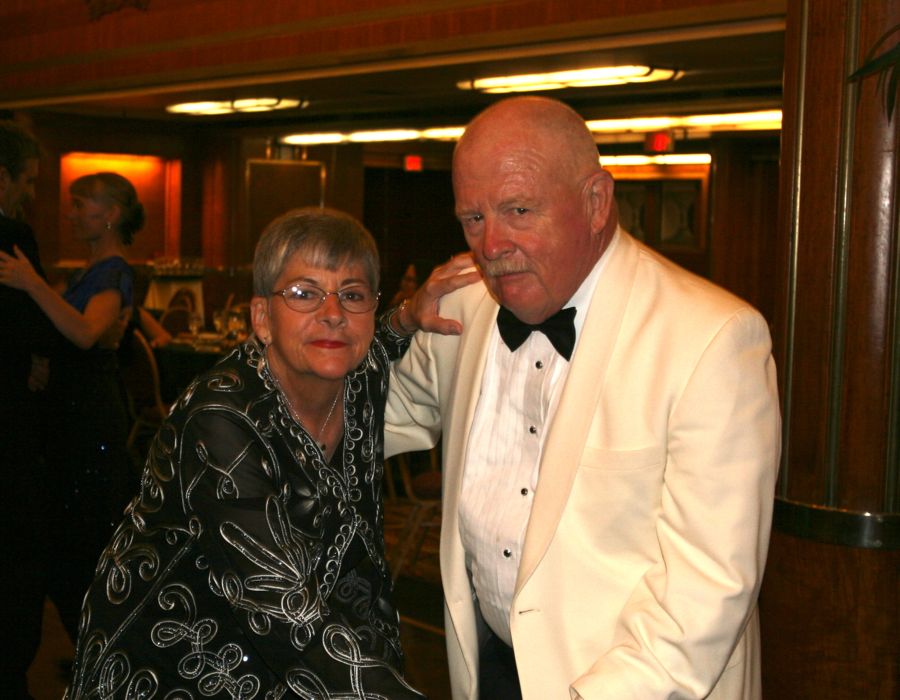
Paul tries to remember the new step from last week
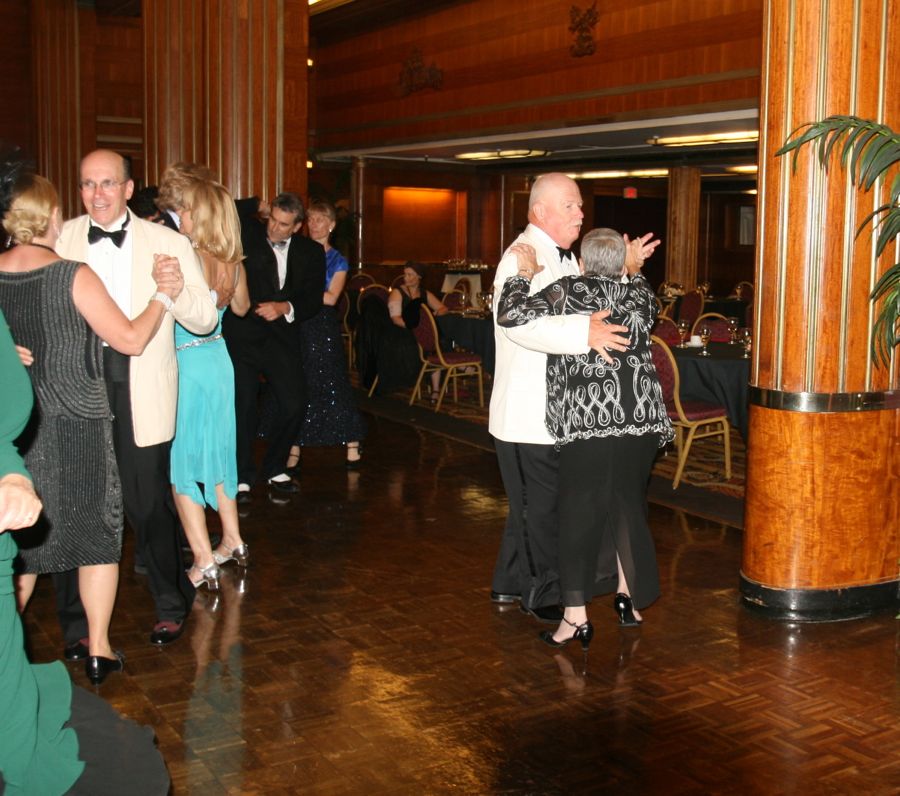
"See.... They are giving us space because they know what happens when we begin to spin!!"
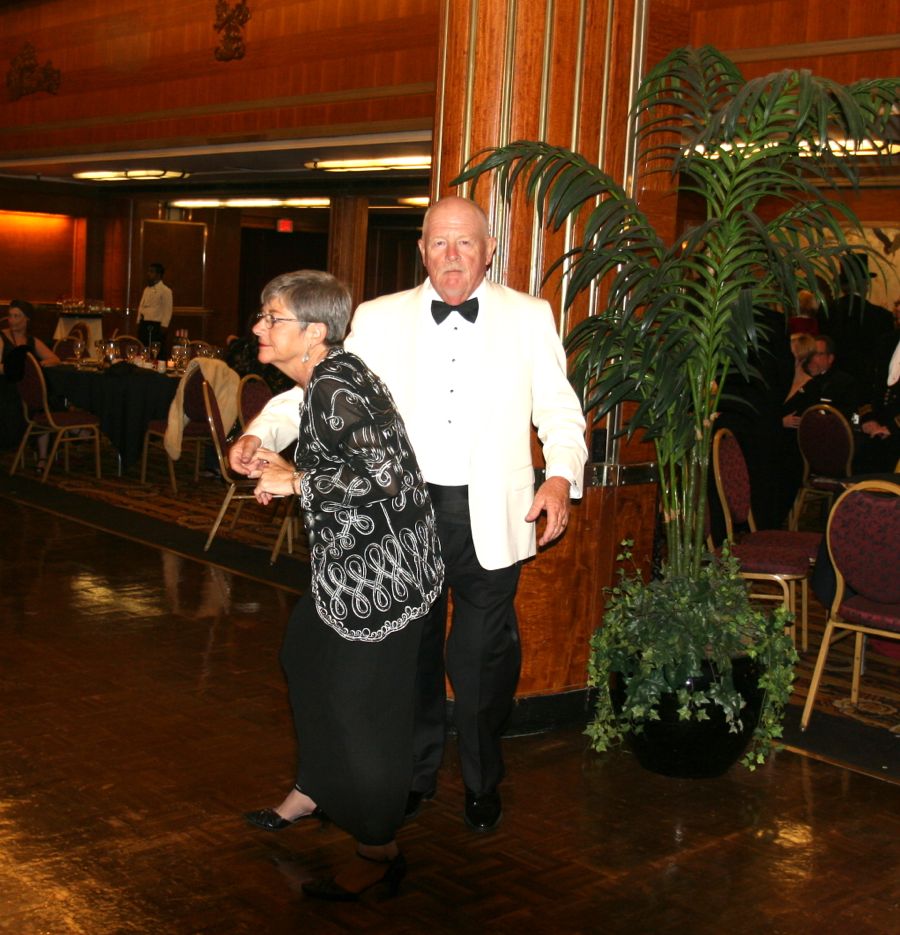
OK, Paul remembered... First to the right and then to the left.... stand up, sit down, fight fight fight.... Nope, wrong one!
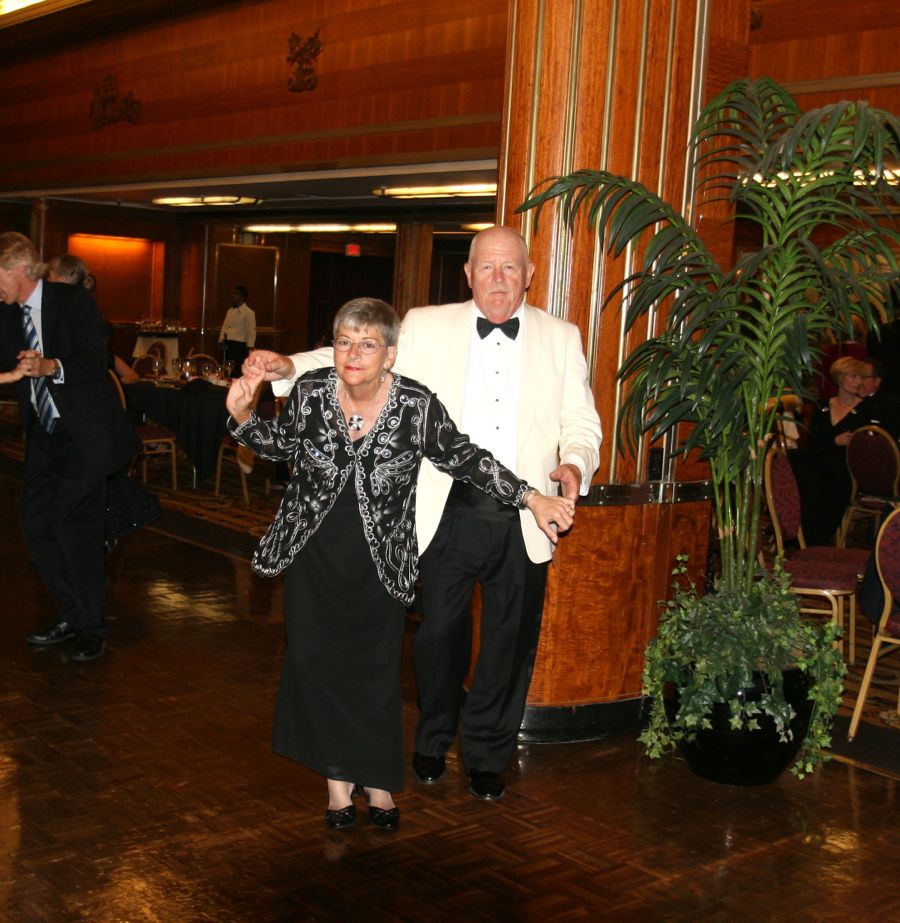
We are flying and almost the last folks on the floor
Do We Have To Go Home???
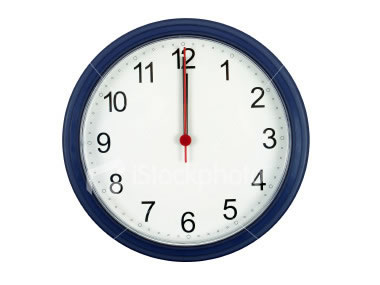

Time to rest and get ready for tomorrow
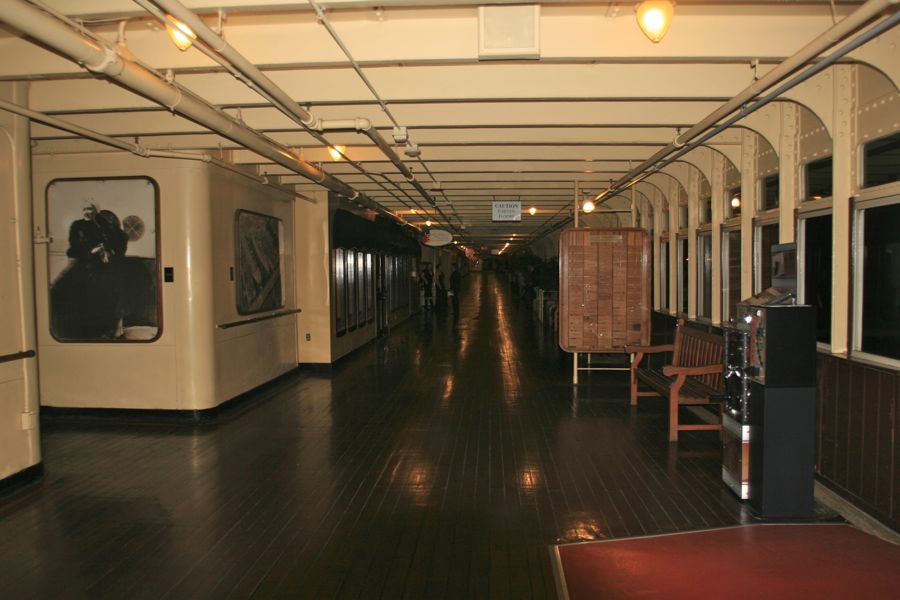
The ghosts are out and about this evening.... It is 12:15
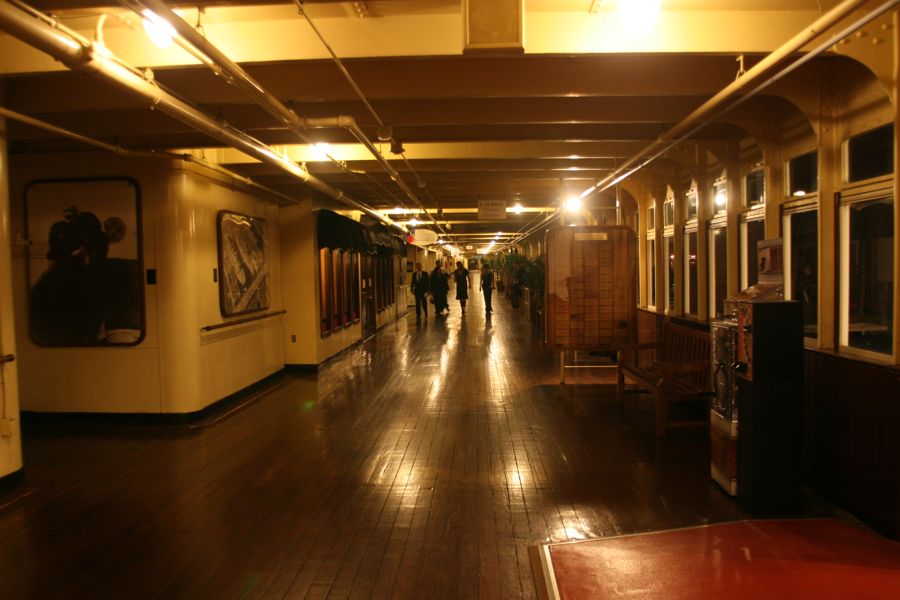
It's a bit romantic out here on the deck.....
